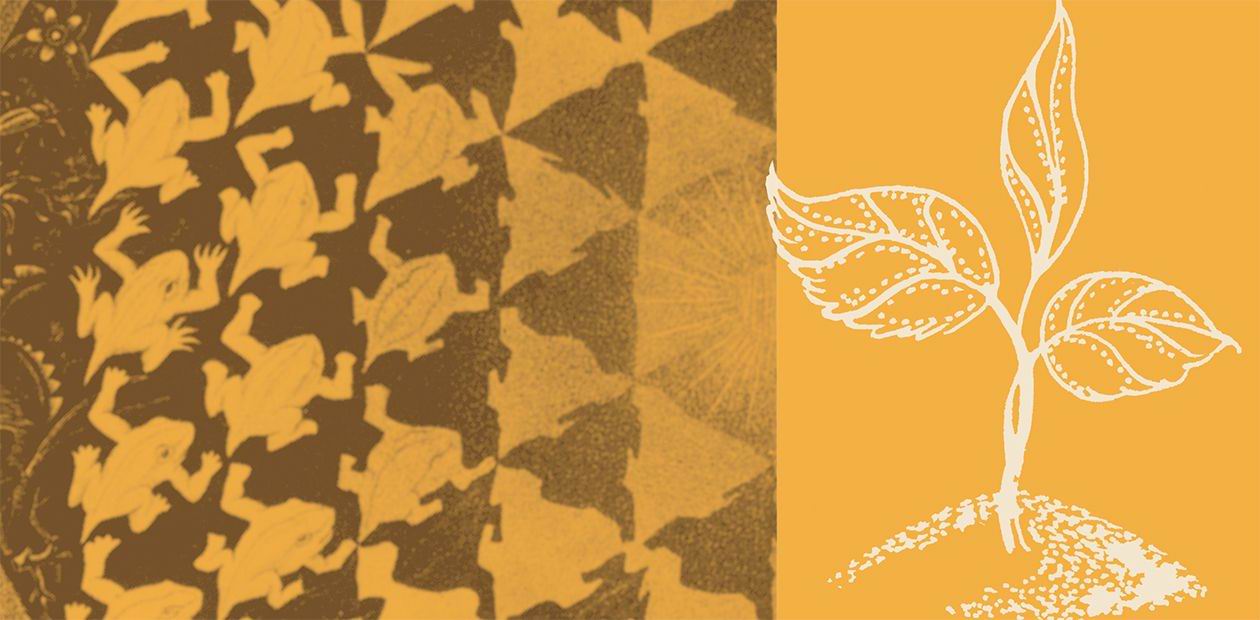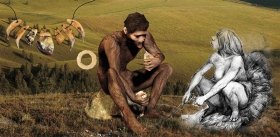Transgenic Relatives
How do you see the process of biological evolution? The picture that appears before your mind’s eye looks like a sort of a branching genealogical tree. According to the classical postulates of Darwinism, at the base of the evolutionary trunk there are rather simple ancestors, from which more complex forms were derived, which, in turn, gave origin to new evolutionary branches: from unicellular to multicellular organisms, from invertebrate to fishes, reptiles, birds, and mammals. The place of each group of organisms in the evolutionary process has been determined mainly on the basis of their morphological and physiological relationships, often supported by paleontological records
Genomes And Genes
At the turn of the 20th century, it became possible to perform evolutionary constructions using not only the formal resemblance between species but also the closeness of their genomes, i.e. the set of genes and genetic elements specifying all characters of an organism. Differences in the structure of genes (DNA segments encoding protein molecules and RNA) provide an insight into the degree of genetic relationship between different kinds of organisms.
The emergence of new properties is actually not related to the accumulation of gradual mutation – this would have been too long an evolutionary process. This is a pulsed phenomenon related to the fact that genes can be transferred from one organism to another, bringing in fundamentally new characteristics
The first complete bacterial genome was decoded only in 1995. Since then, the number of deciphered genomes has been increasing rapidly. Today, comparative analysis of genomes opens up a real possibility of revising our views on the origin and evolution of species.
The basic elements of the molecular genetic tree are orthologs – genes that have evolved from a common ancestor and are nearly identical in all groups of organisms. They carry information on the major vital characteristics and are transmitted almost without changes during the evolution from simple to more complex organisms.
From orthologs paralogous genes have arisen, which are different from the prototypes but similar within the same genome. This has resulted in an increase in the volume of genetic information, cell specificity, coordination of functions, etc. There has been a gradual complication of the structures of organisms, reflecting Darwin’s principle of ascending or vertical evolution.
This, however, is not the only pathway for evolution. Consider parasites – in this case, a different type of evolutionary changes occurs, which results in the reduction and simplification. Reductive evolution eliminates the ‘unnecessary’ (genes, functions, cell organelles) for the purpose of the best adaptation of an organism to special environmental conditions. Thus, many pathogenic bacteria have lost a large number of genes since they live at the expense of the energetic and metabolic systems of the host’s cells, following the principle: what is the good of making anything of your own if you can get someone to make one for you? In this case, our evolutionary tree begins to grow in the opposite direction – from complex to simple, or up a staircase that leads downward... As a result of descending evolution, organisms can conquer narrow ecological niches.
These two types of evolutionary transformations can be traced on the classical ‘organismal’ tree. The third type of evolution, related to horizontal gene transfer, has become clear only recently, due to advances in genetics. Moreover, it has become clear that this very mechanism was the main factor of speciation in microorganisms at early stages of biological evolution.
The ‘First ’ Genetic Engineer
The history of genetic engineering has started out less than 40 years, but today the general public is well aware of this type of genetic transformations and everyone has heard of transgenic organisms because this topic makes headlines. But humans were not the first genetic engineers. For its evolutionary purpose, nature has widely employed (and still employs!) methods based on horizontal gene transfer from one organism to another through the channels of genetic communications.
Horizontal transfer can involve organisms that are very distant evolutionary cousins, even those belonging to different kingdoms! Genes are transferred with various vectors (viruses, plasmids, mobile genetic elements) and through various processes which involve physical contact between cells or penetration of foreign DNA in cells. Any simple organism could simply eat a bacterium and have, as a result, bacterial genes in its genome! Obviously, the most active gene transfer should occur in symbiotic and parasitic systems, i.e. in communities where unrelated organisms are in close physical contact.
Genetic Mosaic
Modern methods make it possible to find foreign genes introduced in a genome from outside by horizontal transfer. Examining the DNA nucleotide composition and the frequency of particular codons, one determines which of the genome fragments are foreign and which are ‘native.’
In this way, one detects insertions of foreign DNA segments in a genome that occurred in the organism relatively recently (naturally, on the evolutionary scale). With time, genome modifications and mutations lead to ‘junction’ or unification of foreign genes, and they cease to differ from ‘native’ genes. By the way, from the degree of ‘foreignness’ of a fragment, it is possible to pinpoint the moment in evolution when it appeared in the genome.
What is the fraction of immigrant genes in the already deciphered genomes? For example, in a popular colon bacillus, about 16 % of the genome was apparently received fairly recently – about 100 million years ago. In a number of pathogenic bacteria, the fraction of foreign genes varies from 1 to 8 %, and in some free living bacteria and archebacteria, it reaches 20 %.
In the genomes of eukaryotes there are many genes of bacterial or archaeal origin. Bacterial genomes, in turn, contain some genes typical of animals or plants. Generally, in most cases, it is difficult to determine what particular organisms were donors since the ‘foreign’ inserts detected in genomes could get there through a chain of intermediate hosts. The result is of importance: the genomes of almost all organisms are mosaic, which confirms the fact of active genetic transfer, in which very different groups of organisms participated during evolution.
By the way, according to the most popular hypothesis of the origin of eukaryotes, their genome was formed by fusion of archaea and bacteria, what explains the presence of ‘ancient’ genes in it. Moreover , it is considered that eukaryotes’ cell organelles, having their inherited material, appeared by endosymbiosis with bacteria. During this process horizontal gene transfer took place from mitochondria and chloroplasts, bacteria’s predecessors, to nuclear genome of eukaryotes, that made a great contribution to the mosaic structure of genomes of eykaryotes.
What Is Transferred And How
Transitions are very rare for ‘housekeeping’ genes, i.e. the genes of multicomponent information systems responsible for copying and transmission of hereditary information and for vital energetic processes. At the same time, the genes controlling cell structures, in particular, metabolism features and transport paths are transferred relatively easily. The acquired DNA segments frequently include plasmids, proviruses, and protein genes facilitating integration of foreign genetic material into a genome.
Glossary
Archaea (archebacteria): microbes constituting a separate kingdom of organisms on the evolutionary tree; in cell structure they are similar to typical prokaryotic bacteria but differ from them in the organization of information systems, which bear resemblance to the systems of eukaryotic organisms (fungi, plants, and animals).
Vector: a molecular construct consisting of the DNA of plasmids, viruses or other genetic entities and capable of reproducing itself. Foreign genes inserted in the vector composition can be transferred into a recipient cell.
Gene: a basic genetic unit represented at the molecular level by a DNA nucleotide sequence encoding a protein structure or RNA.
Genetic element: a nonencoding DNA sequence region interacting with the specific proteins involved in the regulation of gene work and the organization of the genetic apparatus.
Genome: ordered sequence of all genes and genetic elements of an organism.
Codon: a unit of the genetic code consisting of three nucleotides (a triplet) and responsible for including a particular amino acid in a protein; the sequence of codons in a gene encodes the sequence of amino acids in the protein.
Orthologous genes (orthologs): structurally similar genes in different species’ genomes derived from a common ancestral gene.
Paralogous genes: similar genes in the same species derived from orthologs by duplication but differing among themselves as a result of accumulation of mutation changes.
Colon bacillus (Escherichia coli): an enterobacterium used as a model object in molecular biology and genetics.
Eukaryotes: organisms whose cells contain a nucleus and a cytoskeleton (protozoan, fungi, plants, and animals).
Cell organelles of eukaryotes: mitochondria and chloroplasts (energy ‘machines’ of cells) possessing their own subgenomes.
Transgenesis: transfer and integration of foreign genes in a recipient organism using gene engineering methods.
Today, the functions of only 30-40 % of the genes in the genomes of model organisms are understood. We can be aware of a gene itself. We can know how it is constructed and where it is located. But what does it do in the cell... These poorly studied ‘grey eminences’, for which there are no orthologs present in recipient organisms, are transferred most often and may play a key role in organism’s adaptation to changed environmental conditions. In horizontal transfers, most organisms act as flow-through vessels: some genes arrive and are transformed and others go away, and balance between these processes results in a definite size of the genome.
Horizontal gene transfer is most important to the microbial world. In these organisms there is no process of sexual reproduction typical of higher organisms. In this connection, horizontal transfer for them has been one of the main ways to increase and modify genetic information. In this sense, the classical definition of species is not appropriate for archaea and bacteria because of the high plasticity of their genomes and because of the presence of a large ‘exchange’ gene pool.
As organisms have become more complicated during vertical evolution, barriers to horizontal gene transfer have emerged and developed. Mechanisms have evolved to ensure autonomy and stability of native genomes. Therefore, in higher organisms, which have complex genetic apparatus and reproductive isolation systems, the frequency of horizontal transfers should have decreased: the probability of foreign gene integration in the genomes of higher organisms is extremely insignificant. This fact should appeal to those who enjoy eating transgenic pears and other fruits of genetic engineering...
Fruits Of Natural Transgenesis
Let us revert to our evolution tree. We are now able to understand how similar genetic elements suddenly occur in the genomes of organisms that are evolutionarily distant from one another. The term ‘horizontal transfer’ is rather conditional because gene transfer can actually occur in many ways, though at different probabilities and rates. During evolution, very unusual genome crossings and intermediates have arisen, and in the early stage of evolution there was just some sort of a ‘communal household’, which resembles interwoven fungal hyphae rather than the familiar sight of a branching tree.
What benefits can natural transgenesis bring to a biological species? There are a lot of them. For example, there is a capability to receive a brand new gene and, hence, a new trait or to acquire paralogous genes (genes functionally similar to intrinsic genes) and thus to increase the variety of proteins in cells. There is a chance to get an ortholog from an evolutionarily distant group and thus to improve any function or to modify the regulation of metabolism.
If transgenesis makes it possible for an organism to assimilate a new nutrient, the organism can find a new niche for itself. It can acquire resistance to adverse environmental factors, toxins, pathogens – it is in exactly this way that woeful antibiotic resistance is rapidly transmitted in the microbial world.
Suppose that acquired genes turn out to be functional duplicates of those already available. This still does not matter because insurance for the case of damage to the native gene is not superfluous. It is not necessary that newly acquired genes be kept in the unchanged autonomous form. Recombination and fusion of functionally different gene segments can give rise to brand new genes and, hence, new proteins with different cell functions.
Thus, horizontal gene transfer, radically changing the properties of organisms, considerably extends the range of variation necessary for natural selection. In some cases, the acquisition of foreign genes changes the direction of evolution of species and gives impetus to the formation of a new population capable of superseding the preexisting species. The role of this factor as a source of fast evolutionary changes is especially important during global crises and disasters. An abrupt sudden change rather than gradual accumulation of mutations is the essence of horizontal gene transfer as one of the driving forces of the evolutionary process.
The Consequences Of Transgenesis
In the past 30 years, humans have succeeded in employing gene transfer methods. Gene engineering allows for the fast and targeted genetic modification of various organisms, including plants and animals.
Each of us have already ingested transgenic commodities many times through the consumption of various foods and drugs. In the Unites States, for example, over 70 % of all food stuffs contain ingredients obtained from transgenic organisms. In Russia, this fraction is still insignificant but it will increase steadily.
There are both benefits and risks attached to this process. In view of the global demographic situation it is impossible, in principle to avoid using genetically modified organisms as natural selection resources are limited. It should be noted that the foreign genes that appear in food from transgenic plants are not integrated into the human genome through horizontal transfer mechanisms and, consequently, are not a hazard.
However, one should realize that the artificial production of transgenic organisms can affect, like many other engineering achievements, the functioning of ecosystems and the paces and trends of biological evolution. Therefore, strict control over genetic engineering is imperative. Careful testing for biosafety is not performed on all new forms of transgenic organisms. Unfortunately, unlike nature, we are not able to assess the consequences of our genetic experiments in a couple million years. What can be done? Our faith in progress must be supported by a sense of responsibility for the future of the biosphere. Then we shall be able to manage the impact effects and implications of this new driving force in evolution!
References
Brown J. R. Ancient horizontal gene transfer // Nature Rev. Genetics, 2003, V. 4, No. 2, p. 121–132.
Doolittle W. F. Lateral genomics // Trends Cell Biology,1999, V. 9, No. 12, M5–M9.
Koonin E. V., Makarova K. S., and Arvind L. Horizontal gene transfer in prokaryotes: quantification and classification // Annu. Rev. Microbiol., 2001, V. 55, p. 709–742.
Syvanen M. and Kado C. I. (Eds.), Horizontal Gene Transfer //Acad. Press., 2002, 457 p.
Shestakov S. V. On the early stages of evolution in terms of genomics //Paleontological Journal, 2003, No. 6, p. 50–57.
Shestakov S. V. Innovation role of horizontal gene transfer // Advances in Modern Natural Science, 2004, No. 6, p. 18–20.















